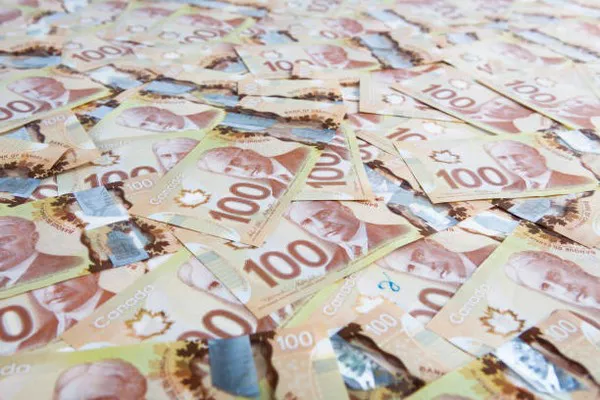Canada, known for its distinctive currency, has a unique coin denomination that stands out among its counterparts – the two-dollar coin, affectionately known as the “toonie.” This article delves into the history, design, circulation, and significance of Canada’s two-dollar coin, shedding light on its features, usage, and cultural impact.
1. The Birth of the Toonie: A Brief History
The introduction of the toonie into Canada’s currency system marked a significant milestone in the country’s monetary evolution.
Replacement of the Two-Dollar Banknote
Prior to the introduction of the toonie, Canada circulated a two-dollar banknote alongside its one-dollar coin, commonly referred to as the “loonie.” However, due to the banknote’s vulnerability to wear and tear and its relatively short lifespan, the Bank of Canada sought a durable alternative to replace it.
The Toonie’s Debut
In 1996, the Royal Canadian Mint unveiled the two-dollar coin, featuring a unique bi-metallic composition. The coin’s inner core is made of a nickel alloy, while its outer ring is composed of aluminum bronze. This distinctive design not only enhances durability but also aids in counterfeit prevention.
2. Design and Composition: The Toonie’s Visual Identity
The toonie’s design reflects Canada’s rich cultural heritage and natural beauty, featuring iconic Canadian symbols and imagery.
Obverse Design: The Queen’s Effigy
The obverse side of the toonie typically features the effigy of Queen Elizabeth II, Canada’s reigning monarch. This portrayal of the Queen serves as a symbol of Canada’s ties to the British monarchy and its status as a constitutional monarchy.
Reverse Design: Canadian Icons
The reverse side of the toonie showcases various Canadian icons and motifs, often changing to commemorate significant events, anniversaries, or themes. Past designs have featured depictions of polar bears, the northern lights, Canadian wildlife, and national landmarks.
3. Circulation and Usage: The Toonie in Everyday Transactions
The toonie serves as a versatile and widely accepted form of currency in Canada, circulating alongside other denominations in everyday transactions.
Role in Cash Transactions
The toonie is commonly used in cash transactions for purchasing goods and services, alongside other coins and banknotes. Its distinct size, weight, and appearance make it easily recognizable and distinguishable from other coins.
Availability and Accessibility
Toonies are readily available from banks, financial institutions, and retail businesses across Canada. They are distributed through regular coin circulation channels and are commonly obtained as change in cash transactions.
4. Cultural Significance: The Toonie’s Place in Canadian Identity
Beyond its practical utility as a form of currency, the toonie holds cultural significance and has become a symbol of Canadian identity.
National Pride and Recognition
The toonie’s unique design and Canadian-themed motifs evoke a sense of national pride and recognition among Canadians. Its circulation reinforces Canada’s distinct cultural heritage and natural landscapes.
Commemorative Issues
In addition to standard designs, the Royal Canadian Mint periodically releases special-edition toonies to commemorate significant events, anniversaries, or themes. These commemorative issues serve as collectible items and contribute to the toonie’s cultural appeal and relevance.
Conclusion:
The toonie stands as a testament to Canada’s ingenuity, innovation, and cultural diversity. Its introduction revolutionized Canada’s currency system, offering a durable and distinctive alternative to traditional banknotes. As an integral part of Canada’s monetary landscape, the toonie continues to play a vital role in everyday transactions while serving as a symbol of Canadian identity and pride.
FAQs:
Why is the Two-Dollar Coin Called a Toonie?
The term “toonie” originated as a playful combination of “two” and “loonie,” Canada’s one-dollar coin. It was coined shortly after the introduction of the two-dollar coin in 1996 to differentiate it from the loonie, which features a common loon on its reverse side.
When Was the Two-Dollar Coin Introduced in Canada?
The two-dollar coin, commonly known as the toonie, was introduced in Canada on February 19, 1996. It was launched by the Royal Canadian Mint to replace the two-dollar banknote and enhance the durability of Canada’s currency.
What Is the Composition of the Two-Dollar Coin?
The two-dollar coin, or toonie, has a distinctive bi-metallic composition. Its inner core is made of a nickel alloy, while its outer ring is composed of aluminum bronze. This unique design not only enhances durability but also aids in counterfeit prevention.
How Common is the Two-Dollar Coin in Canada?
The two-dollar coin, or toonie, is a commonly circulated denomination in Canada and is widely accepted in everyday transactions. It is readily available from banks, financial institutions, and retail businesses across the country and is commonly obtained as change in cash transactions.
Are There Any Special-Edition Toonies Worth Collecting?
Yes, the Royal Canadian Mint periodically releases special-edition toonies to commemorate significant events, anniversaries, or themes. These commemorative issues feature unique designs and themes and are highly sought after by collectors. Some special-edition toonies may have numismatic value beyond their face value and are worth collecting for their rarity and historical significance.


